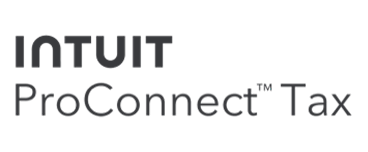
How to Create a Pandemic-Proof Business Continuity Plan in Three Simple Phases
If there’s one thing the Covid-19 pandemic has taught us, it’s that preparing for the “what ifs” in life is not only smart, it is absolutely essential. The same goes for preparing your business for the unexpected, whether it’s a public health crisis like the pandemic, a fire, a flood, upcoming succession in your firm, or even your own illness or death.
While few of us like to dwell on the negative, or downright morbid thoughts of these “what ifs,” the good news is that by taking action—and putting a business continuity plan in place—we can help to ease our own anxiety and that of others, including our clients.
Secure the future of your business with continuity planning.
From my view, the term business continuity planning is not a buzzword or a “nice to have”, it’s an essential point of control we, as business owners, can use to make sure our future livelihoods, and those of the employees we have, are protected as we navigate the unexpected. This should always be something that we anticipate can, and will, happen.
From this perspective, business continuity can be viewed as your ultimate defense strategy—the advance planning and preparation we can do to ensure our businesses will have the capability to operate during emergency events (Covid-19, anyone?).
For the record, I credit my own business continuity plan for allowing my accounting firm to continue operating seamlessly throughout the pandemic. To quote the enigmatic actor, Will Smith, “If you stay ready, you ain’t gotta get ready.” Our firm didn’t skip a beat during Covid-19—we were even able to add new clients. This is the power of having your business continuity plan in place, and I hope after you go through the process yourself, you will too.
A three-phase approach for creating a pandemic-proof business continuity plan
As I tell my clients, who are primarily small business owners, if you take continuity planning step-by-step it doesn’t have to be overwhelming. For my own accounting firm, I have found that devoting time on the weekends (rather than trying to do it during the hectic workweek) to strategize and approaching my continuity planning in the following three distinct phases has helped me keep the process doable:
Phase 1: Analyze the Impact of a Crisis on Your Business Operations
No matter what kind of crisis your business faces (and there will be another one coming down the pike at some point) taking a proactive approach to continuity planning can help reduce its impact. Start with these steps:
1) Make a comprehensive list of your critical business functions and partners who are part of your business processes.
2) Identify the financial and operational risks related to these processes in your business. What would happen if they fail during a crisis? These questions can help you think about potential risks:
- Would you lose clients?
- Could there be a data breach that affects your reputation, data integrity or impacts your customers directly?
- How would a ransomware attack or computer virus affect your ability to operate?
- If your office was affected by a flood or fire, how would you cope with any papers you might lose?
- Are you vulnerable to lawsuits if client data or paper documents are lost or compromised?
3) What kind of contingencies or processes do you need to add to ensure you can keep functioning and serving your customers? Make a prioritized list of needs based on your findings above. We’ll explore how to approach your technology infrastructure in the next phase.
Phase 2: Create a Business Continuity Plan Framework
Now it’s time to start putting together specific actions you need to prepare for in key operational areas that are part of your business continuity plan, including:
1) Personnel & remote work capabilities
- Consider how will your staff continue to work in the event of a business interruption? Does your business have a plan for productive remote work capabilities?
- If you use contractors, how will they continue to serve your business? Do you need to provide them with secure access to your files? Make sure they are in the loop when it comes to your continuity plan!
2) Disaster response and recovery resources
- When “what ifs” happen, you’ll need a list of where things are and whom to call. Make one if it doesn’t exist already for your business!
3) Technology infrastructure
- Embrace the evolution to running your business in the cloud. In order to keep your business running, you must be able to operate from anywhere, anytime.
- Identify if any of your core business processes are completely reliant on an on-premise desktop solution or in-house server—or, dare we say it? Paper. If so, moving these to the cloud should be your top priority.
- Flowing from the above point, it is essential that as part of the planning process you consider your technology needs. Having the right tech stack in place is the backbone of your business continuity plan. See our Blueprint for a Business Continuity Tech Stack to get started.
- Go paperless! If you haven’t already reduced or eliminated the paper your business has to handle, do it now. In my mind when it comes to business continuity COVID™ should stand for:
- Collection and retention
- Of
- Very
- Important
- Documents
Document management is absolutely crucial when it comes to enabling your business to continue functioning “no matter what!”
4) Covid-19 continuity
In direct relation to business continuity and Covid-19, there are still steps you can put in place in case the pandemic worsens or to be proactive about good business continuity practices in the face of future outbreaks or disasters. For example:
- Have a Covid-19 policy in place for staff, clients and vendors so they know the precautions they should be taking when working for or with your business.
- Keep on top of CDC and other health updates so you can run your business and keep everyone your business interacts with, safe.
Phase 3: Documenting and communicating your business continuity plan
Another indispensable part of the business continuity planning process is, of course, actually documenting the plan in an electronic file (and preserving it in the cloud!). To this end, in this phase you will:
- Write down all of the processes and solutions to the questions you answered in the preceding phases along with the resources that you have listed in your notes to create an outline of your firm’s own business continuity plan.
- Next, think about how you will communicate your business continuity plan with staff, clients, vendors, and family. Sharing this information with key stakeholders of your firm will help mitigate any added confusion during times of crisis.
Tackling these three phases of business continuity planning will produce a solid foundation for your company to withstand almost anything that comes your way. The added benefits of lower anxiety levels for you, your family and your team are also important benefits of devoting time to this process.
Although developing a business continuity plan does require some time and effort, when you think of it as a business asset to secure your future and your peace of mind, it makes it worthwhile. Use this three phase approach get your pandemic-proof business continuity plan done—so your business will be as ready and as resilient as possible!






